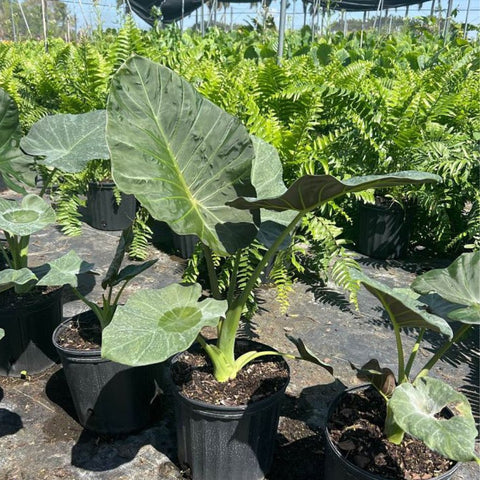Introduction: Embracing Clover for a Blooming Spring
As the frost of winter slowly retreats, the anticipation of a blooming spring keeps gardeners on their toes. Among the array of lush greens and vibrant blooms that herald this season of renewal, clover emerges as a distinguished protagonist for both novice and seasoned horticulturists. Renowned for its charm and resilience, clover offers a plethora of advantages for any garden, lawn, or farm.
Integrating clover into your planting strategy is a move that promises enduring growth and beauty. This remarkable plant, often underestimated, offers an ecological, aesthetic, and economic edge. Whether you're looking to rejuvenate your lawn, enrich your soil, or introduce a touch of wilderness to your garden, clover proves to be an unmatched companion in your spring planting endeavors.
This comprehensive guide will delve into the different kinds of clover, their benefits, planting tips, and maintenance strategies. We'll also highlight some complementary products from Plantology to enhance your gardening experience. Let's explore the world of clover and learn how to harness its full potential this spring.

Understanding Clover: The Basics
Overview of Clover Types
Clover, belonging to the genus Trifolium, is a versatile plant known for its trifoliate leaves and delicate blossoms. It is pivotal to identify the type of clover best suited to your needs, environment, and desired aesthetic. Here’s a look at some of the most popular varieties:
White Clover (Trifolium repens)
White Clover, commonly known as Dutch Clover, is a classic choice for lawns and pastures. Distinguished by its white blooms and creeping growth, it is an ideal ground cover that thrives in various soil types. Its robustness allows it to outcompete many weeds, making it an excellent low-maintenance option for lush green coverage.
Red Clover (Trifolium pratense)
Red Clover stands out with its vibrant pinkish-red flowers, adding a splash of color to any landscape. It is prized not only for its beauty but also for its ability to fix nitrogen in the soil, making it beneficial for improving soil fertility. Red Clover is often utilized in wildflower gardens and as forage for livestock.
Crimson Clover (Trifolium incarnatum)
With its striking crimson blooms, this annual variety is favored for its aesthetic appeal as well as its role in soil enrichment. Often used as a cover crop, Crimson Clover is excellent for preventing soil erosion and increasing organic matter in the soil. It is a stunning choice for those looking to create a visual spectacle in their garden.

The Benefits of Planting Clover
Ecological Advantages
Clover contributes significantly to sustainable agriculture and gardening practices. Its ability to fix atmospheric nitrogen is invaluable for enriching the soil without the need for chemical fertilizers. This not only promotes healthier plant growth but also reduces reliance on synthetic soil amendments, benefiting the environment as a whole.
Maintenance Benefits
Clover requires less frequent mowing compared to traditional grasses, which can reduce maintenance efforts and costs associated with lawn care. Its natural resistance to pests and diseases further minimizes the need for chemical pesticides, allowing for a more organic approach to gardening.
Aesthetic Appeal
The visual diversity that clovers introduce to a landscape is unparalleled. Whether it's the classic white blooms of Dutch Clover, the vibrant hues of Red Clover, or the eye-catching crimson flowers of Crimson Clover, this plant offers a vibrant tapestry of colors that can transform any garden into a visual paradise.
Steps to Planting Clover in Spring
Preparing the Site
Soil Preparation
Begin by selecting an appropriate site for planting. Clover thrives best in well-drained soils. Clear the site of any existing vegetation, weeds, or debris. It's advisable to perform a soil test to determine pH and nutrient levels. Clover prefers a slightly acidic to neutral pH ranging from 6.0 to 7.0. Amend your soil accordingly to optimize conditions for growth.

Choosing the Right Clover
Decide which clover variety aligns with your landscape goals. Consider factors such as climate, soil type, and intended use. Plantology offers a range of premium seeds suitable for different environments. [Explore our clover seed selection](https://plantologyusa.com/) for the best fit for your needs.
Planting Techniques
Seeding Method
Broadcast seeding is the most common method for planting clover. This involves spreading seeds evenly across the prepared soil. For optimal seed-to-soil contact, gently rake the seeds into the soil or use a roller to press them in. Ensure you are sowing at the recommended rate to avoid overcrowding which can lead to poor growth.
Optimal Planting Time
Spring is the optimal time for planting clover as the soil begins to warm. Aim to sow seeds when the danger of frost has passed and the soil temperature consistently remains between 45°F to 65°F. This provides the seeds with the ideal conditions for germination and root establishment.
Ensuring Successful Growth
Watering Requirements
During the establishment phase, ensure adequate moisture is maintained in the soil. Clover requires consistent watering during the early stages to promote deep root growth. However, once established, clover is relatively drought-resistant and can thrive with natural rainfall under normal conditions.
Pest and Disease Management
Natural Resistance
One of clover’s significant advantages is its natural resistance to many common pests and diseases. However, monitoring growth for signs of stress or infestation is vital. Healthy clover typically resists minor pest attacks, promoting a balanced ecosystem in your garden.

Companion Planting
Enhance clover's natural defenses through strategic companion planting. Consider integrating plants known for repelling pests, such as marigolds or certain herbs, into your clover stands. For further plant options, explore our [Agave Collection](https://plantologyusa.com/products/agave-blue), known for resilience and low pest issues.
Integrating Clover with Other Plantology Selections
Clover and Ornamental Plants
Clover pairs beautifully with ornamental plants such as lilies and palms. Consider mixing with foliage like [Agapanthus Lily of the Nile - Blue](https://plantologyusa.com/products/agapanthus-lily-of-the-nile-blue), which complements clover's blooms both visually and in promoting ecological balance in your garden.
Clover as Ground Cover
Use clover as a ground cover in areas surrounding shrubs or palm trees to enhance aesthetic and ecosystem benefits. Our [Adonidia Palm Collection](https://plantologyusa.com/products/adonidia-palm-double), available in various configurations, offers the perfect backdrop for clover's richness.
Conclusion: Clover in the Scenic Landscape
As spring unfolds, embrace clover's ecological benefits and unmatched beauty to enhance your garden. This versatile plant offers more than just aesthetic charm—it's a key player in sustainable gardening. At Plantology, we're committed to supporting your journey from planning to planting, offering a range of products to elevate your horticultural endeavors.

Whether you're opting for a simple clover lawn or integrating it with other vibrant plants, start your planting journey today. [Visit us](https://plantologyusa.com/) for a selection of quality seeds and plants tailored to your landscape vision. Let clover be the foundation of your garden’s renewal this spring.
The Historical Journey of Clover
Understanding the history of clover enriches our appreciation as we introduce it into modern gardens. This plant has deep roots in agricultural and cultural history, symbolizing prosperity, luck, and fertility across various civilizations.
Ancient Agricultural Practices
Clover’s agricultural significance dates back centuries. Ancient civilizations, from the Greeks and Romans to early agrarian societies in Asia, recognized the benefits of clover. Known for its fertility-boosting properties, clover was used as a natural method to rejuvenate fields and enhance crop yields.
By the Middle Ages, clover had cemented its role in crop rotation systems across Europe. Farmers understood that incorporating clover into rotations not only enriched the soil through nitrogen fixation but also improved the subsequent yields of main crops like wheat and barley.
Symbolism and Folklore
Clover leaves hold a place in folklore and symbolism. The four-leaf clover, a rare mutation of the common three-leaf variety, is universally recognized as a symbol of good luck. The trifoliate clover has been a symbol of the holy trinity in Christianity and a representation of faith, hope, love, and luck in Irish tradition.

Modern Revitalization
In recent years, there’s been a resurgence in clover's popularity, paralleling the rise in sustainable landscaping and ecological gardening. As more people become aware of clover’s benefits, including its minimal maintenance and environmental advantages, it continues to find new life in contemporary gardens and lawns.
Advanced Maintenance Strategies
Soil Quality Optimization
While clover is resilient, creating optimal soil conditions will ensure its best performance. Incorporate organic matter such as compost or well-rotted manure to enhance soil structure. Regularly test soil nutrient levels, and adjust with natural amendments as necessary to maintain optimal fertility and pH balance.
Compaction Management
Soil compaction can adversely affect root growth and water absorption. Aerate compacted soil by slicing slits or using a core aerator. This practice reduces compaction, encouraging healthy root development and effective water infiltration for the clover plants.
Weed Control Techniques
Clover's dense mat often suppresses weed growth, but persistent weeds may still infiltrate. Utilize mulching strategies or organic ground covers between clover stands to further deter invasive species. Rotate planting areas with cover crops or alternate clover types to diversify and reduce weed dependency.

Organic Weed Suppression
For a more natural approach, employ manual methods such as hoeing or hand weeding. Mulching with organic material not only suppresses weed emergence but also aids in moisture retention and temperature regulation around clover beds.
Clover's Role in Environmental Conservation
Supporting Biodiversity
The introduction of clover to gardens fosters biodiversity. Its nectar-rich blossoms attract pollinators, including bees and butterflies, crucial for maintaining ecological balance. By including clovers in your landscape, you create a thriving habitat for different beneficial species, ensuring a well-rounded ecosystem.
Pollinator Attraction
Consider establishing pathways or sections purely dedicated to pollinator gardens combining clover with native wildflowers. This provides consistent forage throughout the growing season, supporting local bee populations that are vital for pollination of various food crops.
Soil Erosion Control
Clover is unparalleled in preventing soil erosion due to its dense root system. This attribute makes it particularly valuable in areas prone to run-off or wind erosion. By binding the soil, clover stabilizes surfaces, enhances water absorption, and increases organic matter retention.

Experimenting with Clover: A Canvas for Creativity
Designing Unique Landscapes
Clover offers a canvas for imaginative horticultural designs. Mix different varieties or combine colors to create visually appealing patterns. Its versatility allows you to replace sections of high-maintenance grass with clover, forming intricate and sustainable motifs across expansive lawns.
Mosaic Lawn Patterns
Explore artistic expression by designing mosaic patterns with clover varieties interspersed with other low-growing perennials. Consider creating pathways or border designs in your garden landscape utilizing contrasting colors and textures.
Indoor Clover Cultivation
While primarily outdoor, clover's charms can be brought indoors. Experiment with small indoor gardens or terrariums, using miniature clover varieties as ground cover. These indoor displays add a touch of greenery to your home environment and serve as a conversation starter with guests.
Seasonal Blends and Rotations
Incorporate clover in seasonal garden rotations. Pair early-blooming clover types with late-blooming flowers or vegetables, ensuring continuous coverage and appeal across gardening seasons. This not only enhances landscape variety but also maximizes environmental benefits throughout the year.

Combining Clover with Plantology's Advanced Solutions
Creating Resilient Ecosystems
Plantology offers a plethora of products designed to support clover’s ecological roles. Our natural fertilizers and soil conditioners, such as [Eco-Bloom Enhancer](https://plantologyusa.com/products/eco-bloom), promote healthy soil biology essential for clover growth. These products, coupled with clover’s natural benefits, lead to thriving and resilient ecosystems.
Greening Urban Spaces
Clover proves invaluable in urban settings, where green spaces are limited. Utilize clover varieties from Plantology's urban collection to create vibrant patches or rooftop gardens, introducing much-needed green lungs to city environments. Their low-maintenance nature is perfect for city dwellers seeking greenery without engaging in intensive gardening.
For more detailed planting advice, visual insights, and explorations of available products, visit [Plantology](https://plantologyusa.com/), where our collection awaits to support your journey of ecological gardening. Let the harmonious blend of clover and Plantology’s curated selections craft a sustainable and captivating landscape in your garden.






























Comments (0)
There are no comments for this article. Be the first one to leave a message!